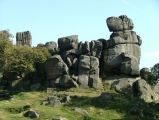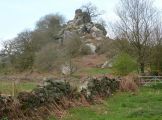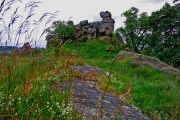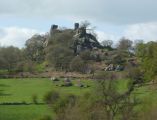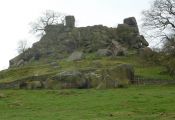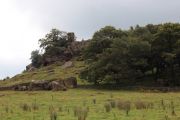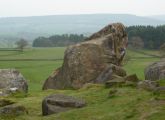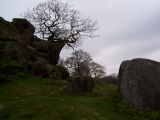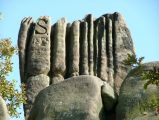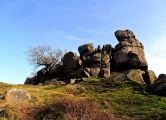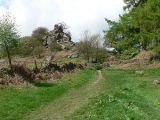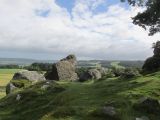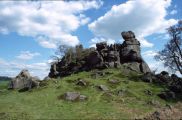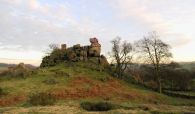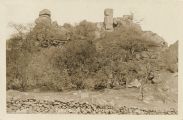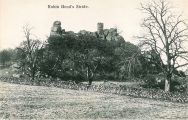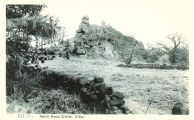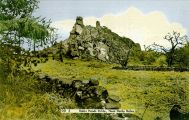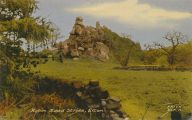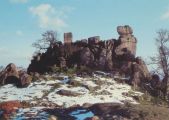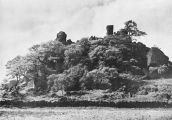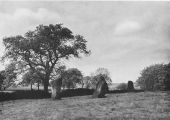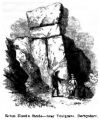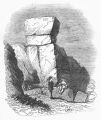Robin Hood's Stride (Harthill): Difference between revisions
m (Text replacement - "Category:Place-Names-topics" to "Category:Place-names-topics") |
mNo edit summary |
||
| (80 intermediate revisions by 2 users not shown) | |||
| Line 1: | Line 1: | ||
__NOTOC__ | __NOTOC__{{PlaceNamesItemTop|Lat=53.156982|Lon=-1.666000|AdministrativeDivision=Derbyshire|Vicinity=1 km N of Elton|Type=Natural feature|Interest=Robin Hood name|Status=Extant|Demonym=|Riding=|GreaterLondon=|Year=1817|Aka=Robin Hood Stride; Mock Beggar's Hall|Century=|Cluster1=|Cluster2=|Cluster3=|Image=Rhs stride j147.jpg|Postcards=Yes|ExtraCat1=Places connected by bowshot|ExtraCat2=|ExtraCat3=|ExtraCat4=|ExtraCat5=|ExtraLink1=Eastwood Rocks (Ashover)|ExtraLink2=|ExtraLink3=|ExtraLink4=|ExtraLink5=|ExtraLinkName1=|ExtraLinkName2=|ExtraLinkName3=|ExtraLinkName4=|ExtraLinkName5=|GeopointPrefix=|GeopointSuffix=|StatusSuffix=|DatePrefix=|DateSuffix=}} | ||
{{ | {{#display_map:{{#var:Coords}}~{{#replace:{{PAGENAME}}|'|'}}|width=34%|enablefullscreen=yes}}<div class="pnMapLegend">Robin Hood's Stride</div> | ||
[[File:Rhs stride j147.jpg|thumb|right|500px|Robin Hood's Stride / [http://www.geograph.org.uk/photo/553120 J147, 11 Sep. 2007, Creative Commons, via Geograph]]]<div class="no-img"> | |||
<p id="byline">By Henrik Thiil Nielsen, 2014-10-14. Revised by {{#realname:{{REVISIONUSER}}}}, {{REVISIONYEAR}}-{{REVISIONMONTH}}-{{REVISIONDAY2}}.</p> | |||
Robin Hood's Stride is the name of a formation of broken gritstone rocks on Hartle Moor close to the village of Elton. There is a pinnacle at either end of the formation, that to the west being known as the Weasel pinnacle and that to the east as the Inaccessible pinnacle.<ref>[http://en.wikipedia.org/wiki/Robin_Hood's_Stride Wikipedia: Robin Hood's Stride.]</ref> The formation is said to owe its name to the belief that the distance between the two pinnacles was equal to the length of Robin Hood's step or stride.<ref>{{:Dobson, Richard Barrie 1976a}}, p. 297.</ref> The alternative name of Mock Beggar's Hall is probably due to the general resemblance of the entire formation to a hall (manor house) with each pinnacle as a 'chimney' at either end of the 'building'. One of two fairly early drawings of Robin Hood's Stride, dated respectively 1794 and 1804, is accompanied by a note about a tradition relating to Robin Hood (see Allusions below). However, the note does not actually include the name 'Robin Hood's Stride', though it may be included in the title of the drawing, if it has one. Until this has been verified, the 1817 allusion cited below must be considered the earliest certain source for the name.<ref>{{:Cameron, Kenneth 1959a}}, vol. I, p. 109.</ref> | |||
{{# | |||
[[File:Rhs stride j147.jpg|thumb|right|500px|Robin Hood's Stride | |||
<p id="byline">By Henrik Thiil Nielsen, 2014-10-14. Revised by {{#realname:{{REVISIONUSER}}}}, {{REVISIONYEAR}}-{{REVISIONMONTH}}-{{REVISIONDAY2}}.</p | |||
Robin Hood's Stride is the name of a formation of broken gritstone rocks on Hartle Moor close to the village of Elton. There is a pinnacle at either end of the formation, that to the west being known as the Weasel pinnacle and that to the east as the Inaccessible pinnacle.<ref>[http://en.wikipedia.org/wiki/Robin_Hood's_Stride Wikipedia: Robin Hood's Stride.]</ref> The formation is said to owe its name to the belief that the distance between the two pinnacles was equal to the length of Robin Hood's step or stride.<ref>{{:Dobson, Richard Barrie 1976a}}, p. 297.</ref> The alternative name of Mock Beggar's Hall is due to the general resemblance of the entire formation to a hall (manor house) with each pinnacle as a | |||
Robin Hood | The note to the drawing just mentioned concerns a tradition that Robin Hood and Little John each shot an arrow from [[Eastwood Rocks (Ashover)]], one of which landed at Robin Hood's Stride. Similar traditions are connected with several ofther pairs of locailties. See the page on [[Places connected by bowshot]]. | ||
As Kenneth Cameron notes in one of the English Place-Name Society volumes on Derbyshire, this and all other Robin Hood-related place-names in Derbyshire are first recorded at a late date.<ref>{{:Cameron, Kenneth 1959a}}, pt. III (vol. XXIX), p. 760.</ref> | |||
Robin Hood's Stride is a popular tourist attraction which has almost certainly been visited by more climbers than outlaws. | |||
{{PlaceNamesItemAllusionsAndRecords}} | |||
== Gazetteers == | |||
* {{:Dobson, Richard Barrie 1976a}}, p. 297. | * {{:Dobson, Richard Barrie 1976a}}, p. 297. | ||
== Sources == | |||
* {{:Cameron, Kenneth 1959a}}, vol. I, p. 109; pt. III, p. 760. | * {{:Cameron, Kenneth 1959a}}, vol. I, p. 109; pt. III, p. 760. | ||
* [http://en.wikipedia.org/wiki/Robin_Hood's_Stride Wikipedia: Robin Hood's Stride.] | * [http://en.wikipedia.org/wiki/Robin_Hood's_Stride Wikipedia: Robin Hood's Stride.] | ||
=== | == Maps == | ||
* 25" O.S. map ''Derbyshire'' XXVIII.12 (''c.'' 1877; surveyed ''c.'' 1876). No copy in NLS | |||
* [https://maps.nls.uk/geo/explore/#zoom=17&lat=53.15734&lon=-1.66601&layers=168&b=5 25" O.S. map ''Derbyshire'' XXVIII.12 (1898; rev. 1897)] (georeferenced) | |||
* [https://maps.nls.uk/view/114588182#zoom=5&lat=4414&lon=1354&layers=BT 25" O.S. map ''Derbyshire'' XXVIII.12 (1898; rev. 1897)] | |||
* [https://maps.nls.uk/view/114588185#zoom=5&lat=4318&lon=1463&layers=BT 25" O.S. map ''Derbyshire'' XXVIII.12 (1922; rev. 1920)] | |||
* [http://maps.nls.uk/view/101600823#zoom=5&lat=4407&lon=4993&layers=BT 6" O.S. map ''Derbyshire'' XXVIII.SE (1884; surveyed 1877-78)] | * [http://maps.nls.uk/view/101600823#zoom=5&lat=4407&lon=4993&layers=BT 6" O.S. map ''Derbyshire'' XXVIII.SE (1884; surveyed 1877-78)] | ||
* [ | * [https://maps.nls.uk/geo/explore/#zoom=16&lat=53.15701&lon=-1.66796&layers=6&b=5 6" O.S. map ''Derbyshire'' XXVIII.SE (1900; rev. 1897)] (georeferenced) | ||
* [http://maps.nls.uk/view/101600820#zoom=5&lat=4348&lon=4641&layers=BT 6" O.S. map ''Derbyshire'' XXVIII.SE (1900; rev. 1897)] | * [http://maps.nls.uk/view/101600820#zoom=5&lat=4348&lon=4641&layers=BT 6" O.S. map ''Derbyshire'' XXVIII.SE (1900; rev. 1897)] | ||
* [http://maps.nls.uk/view/102341340#zoom=6&lat=4493&lon=11788&layers=BT 6" O.S. map ''Derbyshire'' XXVIII (1923; rev. 1919-20)] | * [http://maps.nls.uk/view/102341340#zoom=6&lat=4493&lon=11788&layers=BT 6" O.S. map ''Derbyshire'' XXVIII (1923; rev. 1919-20)] | ||
* [http://maps.nls.uk/view/101600817#zoom=5&lat=4630&lon=4758&layers=BT 6" O.S. map ''Derbyshire'' XXVIII.SE (1923; rev. 1919-20).] | * [http://maps.nls.uk/view/101600817#zoom=5&lat=4630&lon=4758&layers=BT 6" O.S. map ''Derbyshire'' XXVIII.SE (1923; rev. 1919-20)] | ||
* [http://maps.nls.uk/view/101167655#zoom=6&lat=4683&lon=10720&layers=BT 1" O.S. map Sheet 111 (Hills) (1897)] | |||
* [http://maps.nls.uk/view/101167658#zoom=6&lat=4610&lon=11618&layers=BT 1" O.S. map Sheet 111 (Outline) (1897).] | |||
== | == Discussion == | ||
* {{:Ackerley, Fred G 1904b}}; suggests the hill was used as a fort in prehistoric times, possibly connected with the nearby | * {{:Ackerley, Fred G 1904b}}; suggests the hill was used as a fort in prehistoric times, possibly connected with the nearby 'Castle Ring' site. | ||
=== Notes | |||
== Brief mention == | |||
* {{:Brentnall, Margaret 1963a}}, see p. 58 | |||
* {{:Gomme, George Laurence 1893a}}, p. 4: in list of "Natural Curiosities": "group of grit-stone rocks called Robin Hood's Stride, or Mock Beggar's Hall, on Stanton Moor". | |||
* {{:Sandred, Karl Inge 1989a}}, pt. III, p. xvii. | |||
{{PlaceNamesItemAlsoSee}} | |||
== Notes == | |||
<references/> | <references/> | ||
</div> | |||
<div id="gallery"> | |||
{{ImageGalleryIntroduction}} | |||
<gallery widths="195px"> | |||
File:Rhs stride j147.jpg|Robin Hood's Stride / [http://www.geograph.org.uk/photo/553120 J147, 11 Sep. 2007, Creative Commons, via Geograph.] | |||
File:Geograph-2359600-by-Andrew-Hill.jpg|Robin Hood's Stride from the southeast / [http://www.geograph.org.uk/photo/2359600 Andrew Hill, 11 Apr. 2011, Creative Commons, via Geograph.] | |||
File:Rhs stride tom heyes.jpg|Robin Hood's Stride from the north / [http://www.panoramio.com/photo/23281479 Tom Heyes, on or before 10 Jun. 2009, Attribution-No Derivative Works, via Panoramio.] | |||
File:Geograph-2360761-by-Andrew-Hill.jpg|Robin Hood's Stride / [https://www.geograph.org.uk/photo/2360761 Andrew Hill, 12 Apr. 2011, Creative Commons, via Geograph.] | |||
File:Geograph-2359579-by-Andrew-Hill.jpg|Robin Hood's Stride. 'Seen from the footpath approaching from the lane near Harthill Moor Farm' / [https://www.geograph.org.uk/photo/2359579 Andrew Hill, 11 Apr. 2011, Creative Commons, via Geograph.] | |||
File:Rhs stride andrew hill.jpg|Robin Hood's Stride. western end of main formation / [https://www.geograph.org.uk/photo/2359582 Andrew Hill, 11 Apr. 2011, Creative Commons, via Geograph.] | |||
File:geograph-4080476-by-Graham-Hogg.jpg|Robin Hood's Stride / [https://www.geograph.org.uk/photo/4080476 Graham Hogg, 20 jul. 2014, Creative Commons, via Geograph.] | |||
File:geograph-2359583-by-Andrew-Hill.jpg|Outlying rocks at Robin Hood's Stride / [https://www.geograph.org.uk/photo/2359583 Andrew Hill, 11 Apr. 2011, Creative Commons, via Geograph.] | |||
File:geograph-3561104-by-Neil-Theasby.jpg|View of Robin Hood's Stride / [https://www.geograph.org.uk/photo/3561104 Neil Theasby, 18 Jul. 2013, Creative Commons, via Geograph.] | |||
File:geograph-2928714-by-Martin-Speck.jpg|Rock outcrop at Robin Hood's Stride / [https://www.geograph.org.uk/photo/2928714 Martin Speck, 3 May 2012, Creative Commons, via Geograph.] | |||
File:graffiti_from_1885_robin_hood'_stride_geograph.org.uk_553124.jpg|Robin Hood's Stride / [https://www.geograph.org.uk/photo/553120 J147, 11 Sep. 2007, Creative Commons, via Geograph.] | |||
File:geograph-3886543-by-Brian-Frost.jpg|Robin Hood's Stride / [https://www.geograph.org.uk/photo/3886543 Brian Frost, 13 Mar. 2014, Creative Commons, via Geograph.] | |||
File:geograph-006872-by-Sam-Styles.jpg|Robin Hood's Stride, from the footpath leading to it / [https://www.geograph.org.uk/photo/6872 Sam Styles, 2 May 2005, Creative Commons, via Geograph.] | |||
File:geograph-5076674-by-steven-ruffles.jpg|Rocks at Robin Hood's stride / [https://www.geograph.org.uk/reuse.php?id=5076674 Steven Ruffles, 8 Aug. 2016, Creative Commons, via Geograph.] | |||
File:geograph-089407-by-Darius-Khan.jpg|Robin Hood's Stride / [https://www.geograph.org.uk/photo/89407 Darius Khan, 10 Jun. 2003, Creative Commons, via Geograph.] | |||
File:geograph-109809-by-Andrew-Huggett.jpg|Robin Hood’s Stride at Sunset / [https://www.geograph.org.uk/photo/109809 Andrew Huggett, 21 Jan. 2006, Creative Commons, via Geograph.] | |||
File:Anonymous 1917a-r.jpg|{{:Anonymous 1917a}} / HTN collection. | |||
File:Marshall, A 19xxa-r.jpg|{{:Marshall, A 19xxa}} / HTN collection. | |||
File:Frith, Francis 19xxf-r.jpg|{{:Frith, Francis 19xxf}} / HTN collection. | |||
File:Frith, Francis 19xxe-r.jpg|{{:Frith, Francis 19xxe}} / HTN collection. | |||
File:Frith, Francis 19xxg-r.jpg|{{:Frith, Francis 19xxg}} / HTN collection. | |||
File:Pedley, Peter 19xxa-r.jpg|{{:Pedley, Peter 19xxa}} / HTN collection. | |||
File:rhs_stride_unknown_source.jpg|Robin Hood's Stride / Plate from unknown book. | |||
File:Stone circle near rhs stride unknown source.jpg|Stone circle near Robin Hood's Stride / Plate from unknown book. | |||
File:Gutch-john-mathew-1847a-v2-p225.jpg|Robin Hood's Stride / {{:Gutch, John Mathew 1847a}}, vol. II, p. 225. | |||
File:Cunningham-allan-1838f-p313.jpg|Robin Hood's Stride / {{:Cunningham, Allan 1838f}}, see p. 313; HTN collection. | |||
</gallery> | |||
</div> | </div> | ||
{{PlaceNamesItemNavigation}} | |||
Latest revision as of 23:59, 10 June 2022
| Locality | |
|---|---|
| Coordinate | 53.156982, -1.666 |
| Adm. div. | Derbyshire |
| Vicinity | 1 km N of Elton |
| Type | Natural feature |
| Interest | Robin Hood name |
| Status | Extant |
| First Record | 1817 |
| A.k.a. | Robin Hood Stride; Mock Beggar's Hall |
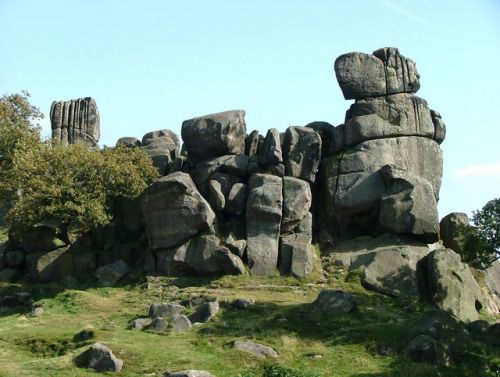
By Henrik Thiil Nielsen, 2014-10-14. Revised by Henrik Thiil Nielsen, 2022-06-10.
Robin Hood's Stride is the name of a formation of broken gritstone rocks on Hartle Moor close to the village of Elton. There is a pinnacle at either end of the formation, that to the west being known as the Weasel pinnacle and that to the east as the Inaccessible pinnacle.[1] The formation is said to owe its name to the belief that the distance between the two pinnacles was equal to the length of Robin Hood's step or stride.[2] The alternative name of Mock Beggar's Hall is probably due to the general resemblance of the entire formation to a hall (manor house) with each pinnacle as a 'chimney' at either end of the 'building'. One of two fairly early drawings of Robin Hood's Stride, dated respectively 1794 and 1804, is accompanied by a note about a tradition relating to Robin Hood (see Allusions below). However, the note does not actually include the name 'Robin Hood's Stride', though it may be included in the title of the drawing, if it has one. Until this has been verified, the 1817 allusion cited below must be considered the earliest certain source for the name.[3]
The note to the drawing just mentioned concerns a tradition that Robin Hood and Little John each shot an arrow from Eastwood Rocks (Ashover), one of which landed at Robin Hood's Stride. Similar traditions are connected with several ofther pairs of locailties. See the page on Places connected by bowshot.
As Kenneth Cameron notes in one of the English Place-Name Society volumes on Derbyshire, this and all other Robin Hood-related place-names in Derbyshire are first recorded at a late date.[4]
Robin Hood's Stride is a popular tourist attraction which has almost certainly been visited by more climbers than outlaws.
Allusions
1804 - Unknown - Note on drawing of Robin Hood's Stride
The tradition of the neighbourhood is, that Robin Hood and Little John stood upon Eastwood Rocks, about 1½ miles off, and shot at this stone [i.e. Robin Hood's Stride, Harthill]:—Little John's hit it, but Robin Hood's fell short of it in the valley below.[5]
1817 - Lysons, Daniel - Magna Britannia (1)
The scenery of the gritstone district is by no means beautiful or agreeable, except in the valleys above noticed [i.e. 'Matlock Dale, Monsal Dale, Middleton Dale, Eyam Dale, and Dove Dale']; it consists chiefly of dreary moors, on some parts of which large masses and groups of rock are seen projecting on the surface, some of them in very grotesque forms. The most remarkable of these groups of gritstone rock are, those on Stanton-Moor, called Robinhood's stride, or Mock-beggar hall, and Rowtor rocks.[6]
1822 - Rhodes, Ebenezer - Peak Scenery (2)
An unfrequented path of another quarter of a mile led us to the base of Mock Beggar Hall, a curious assemblage of sand-stone rocks thrown confusedly together, yet so arranged as to form at a distance a strong resemblance to a regular building, with a huge chimney at each extremity; hence the name which this mass of rocks has obtained: the stony towers at each end are called Robin Hood's Stride.[7]
Gazetteers
Sources
- Cameron, Kenneth. The Place-Names of Derbyshire (English Place-Name Society, vols. XXVII-XXIX) (Cambridge, 1959), vol. I, p. 109; pt. III, p. 760.
- Wikipedia: Robin Hood's Stride.
Maps
- 25" O.S. map Derbyshire XXVIII.12 (c. 1877; surveyed c. 1876). No copy in NLS
- 25" O.S. map Derbyshire XXVIII.12 (1898; rev. 1897) (georeferenced)
- 25" O.S. map Derbyshire XXVIII.12 (1898; rev. 1897)
- 25" O.S. map Derbyshire XXVIII.12 (1922; rev. 1920)
- 6" O.S. map Derbyshire XXVIII.SE (1884; surveyed 1877-78)
- 6" O.S. map Derbyshire XXVIII.SE (1900; rev. 1897) (georeferenced)
- 6" O.S. map Derbyshire XXVIII.SE (1900; rev. 1897)
- 6" O.S. map Derbyshire XXVIII (1923; rev. 1919-20)
- 6" O.S. map Derbyshire XXVIII.SE (1923; rev. 1919-20)
- 1" O.S. map Sheet 111 (Hills) (1897)
- 1" O.S. map Sheet 111 (Outline) (1897).
Discussion
- Ackerley, Fred G. 'Robin Hood's Stride', Notes & Queries, Series 10, vol. II (1904), p. 246; suggests the hill was used as a fort in prehistoric times, possibly connected with the nearby 'Castle Ring' site.
Brief mention
- Brentnall, Margaret. 'Robin Hood of Sherwood Forest', [Unknown British travel and tourism magazine] (1963-12), pp. 15-17, 58, see p. 58
- Gomme, George Laurence, ed. The Gentleman's Magazine Library: being a Classified Colelction of the Chief Contents of The Gentleman's Magazine from 1731 to 1868. [Vol. 14]: English Topography, Part. III (Derbyshire–Dorsetshire) (London, 1893), p. 4: in list of "Natural Curiosities": "group of grit-stone rocks called Robin Hood's Stride, or Mock Beggar's Hall, on Stanton Moor".
- Sandred Karl Inge; Lindström, Bengt, Cornford, B.; Rutledge, P.; Schram, O.K., compil. The Place-Names of Norfolk (English Place-Name Society, vols. LXI, LXXI, LXXIX) (Nottingham, 1989-2002), pt. III, p. xvii.
Also see
Notes
- ↑ Wikipedia: Robin Hood's Stride.
- ↑ Dobson, R. B., ed.; Taylor, J., ed. Rymes of Robyn Hood: an Introduction to the English Outlaw (London, 1976), p. 297.
- ↑ Cameron, Kenneth. The Place-Names of Derbyshire (English Place-Name Society, vols. XXVII-XXIX) (Cambridge, 1959), vol. I, p. 109.
- ↑ Cameron, Kenneth. The Place-Names of Derbyshire (English Place-Name Society, vols. XXVII-XXIX) (Cambridge, 1959), pt. III (vol. XXIX), p. 760.
- ↑ [Unknown], illus. Coloured sketches of Robin Hood's Stride. 1794, 1904. British Library. Add. MS. 6318. ff. 21b, 25, fol. 21b or 25, cited in Gutch, John Mathew, ed. A Lytell Geste of Robin Hode, with Other Ancient & Modern Ballads and Songs relating to this Celebrated Yeoman (London, 1847), vol. II, p. iv, and C., A. 'The Old English Ballads.—Robin Hood.—No. VI', The Penny Magazine of the Society for the Diffusion of Useful Knowledge (1838), pp. 313-16, see p. 313 n.
- ↑ Lysons, Daniel; Lysons, Samuel. Magna Britannia; being A Concise Topographical Account of the Several Counties of Great Britain (London, 1806-22), vol. V, pp. clxxv-clxxvi.
- ↑ Rhodes, E. Peak Scenery, or, Excursions in Derbyshire: made chiefly for the Purpose of Picturesque Observation (London; Sheffield, 1818-1823), pt. III, p. 88.
Image gallery
Click any image to display it in the lightbox, where you can navigate between images by clicking in the right or left side of the current image.
Robin Hood's Stride / J147, 11 Sep. 2007, Creative Commons, via Geograph.
Robin Hood's Stride from the southeast / Andrew Hill, 11 Apr. 2011, Creative Commons, via Geograph.
Robin Hood's Stride from the north / Tom Heyes, on or before 10 Jun. 2009, Attribution-No Derivative Works, via Panoramio.
Robin Hood's Stride / Andrew Hill, 12 Apr. 2011, Creative Commons, via Geograph.
Robin Hood's Stride. 'Seen from the footpath approaching from the lane near Harthill Moor Farm' / Andrew Hill, 11 Apr. 2011, Creative Commons, via Geograph.
Robin Hood's Stride. western end of main formation / Andrew Hill, 11 Apr. 2011, Creative Commons, via Geograph.
Robin Hood's Stride / Graham Hogg, 20 jul. 2014, Creative Commons, via Geograph.
Outlying rocks at Robin Hood's Stride / Andrew Hill, 11 Apr. 2011, Creative Commons, via Geograph.
View of Robin Hood's Stride / Neil Theasby, 18 Jul. 2013, Creative Commons, via Geograph.
Rock outcrop at Robin Hood's Stride / Martin Speck, 3 May 2012, Creative Commons, via Geograph.
Robin Hood's Stride / J147, 11 Sep. 2007, Creative Commons, via Geograph.
Robin Hood's Stride / Brian Frost, 13 Mar. 2014, Creative Commons, via Geograph.
Robin Hood's Stride, from the footpath leading to it / Sam Styles, 2 May 2005, Creative Commons, via Geograph.
Rocks at Robin Hood's stride / Steven Ruffles, 8 Aug. 2016, Creative Commons, via Geograph.
Robin Hood's Stride / Darius Khan, 10 Jun. 2003, Creative Commons, via Geograph.
Robin Hood’s Stride at Sunset / Andrew Huggett, 21 Jan. 2006, Creative Commons, via Geograph.
Robin Hood's Stride / Gutch, John Mathew, ed. A Lytell Geste of Robin Hode, with Other Ancient & Modern Ballads and Songs relating to this Celebrated Yeoman (London, 1847), vol. II, p. 225.
Robin Hood's Stride / C., A. 'The Old English Ballads.—Robin Hood.—No. VI', The Penny Magazine of the Society for the Diffusion of Useful Knowledge (1838), pp. 313-16, see p. 313; HTN collection.

